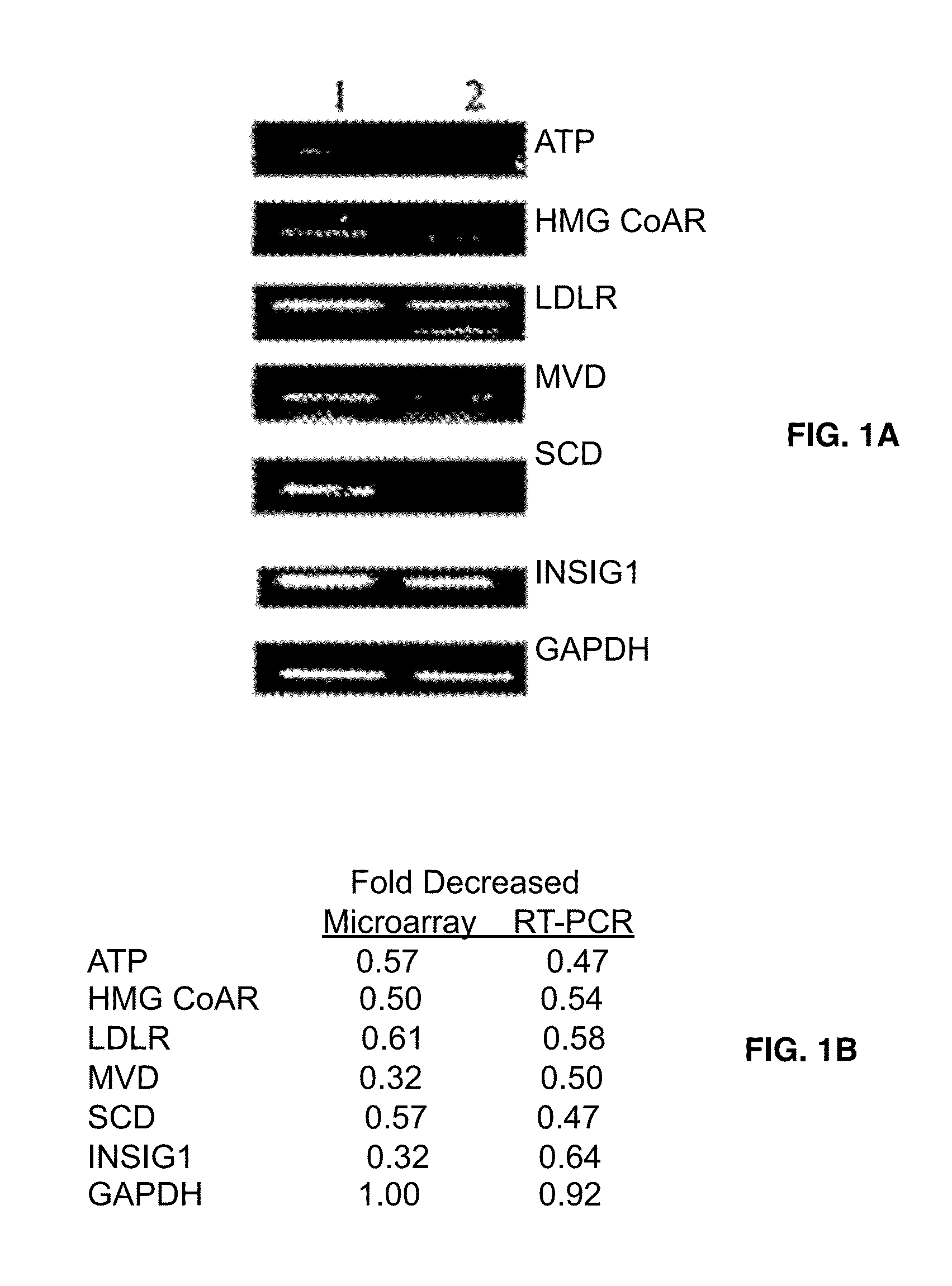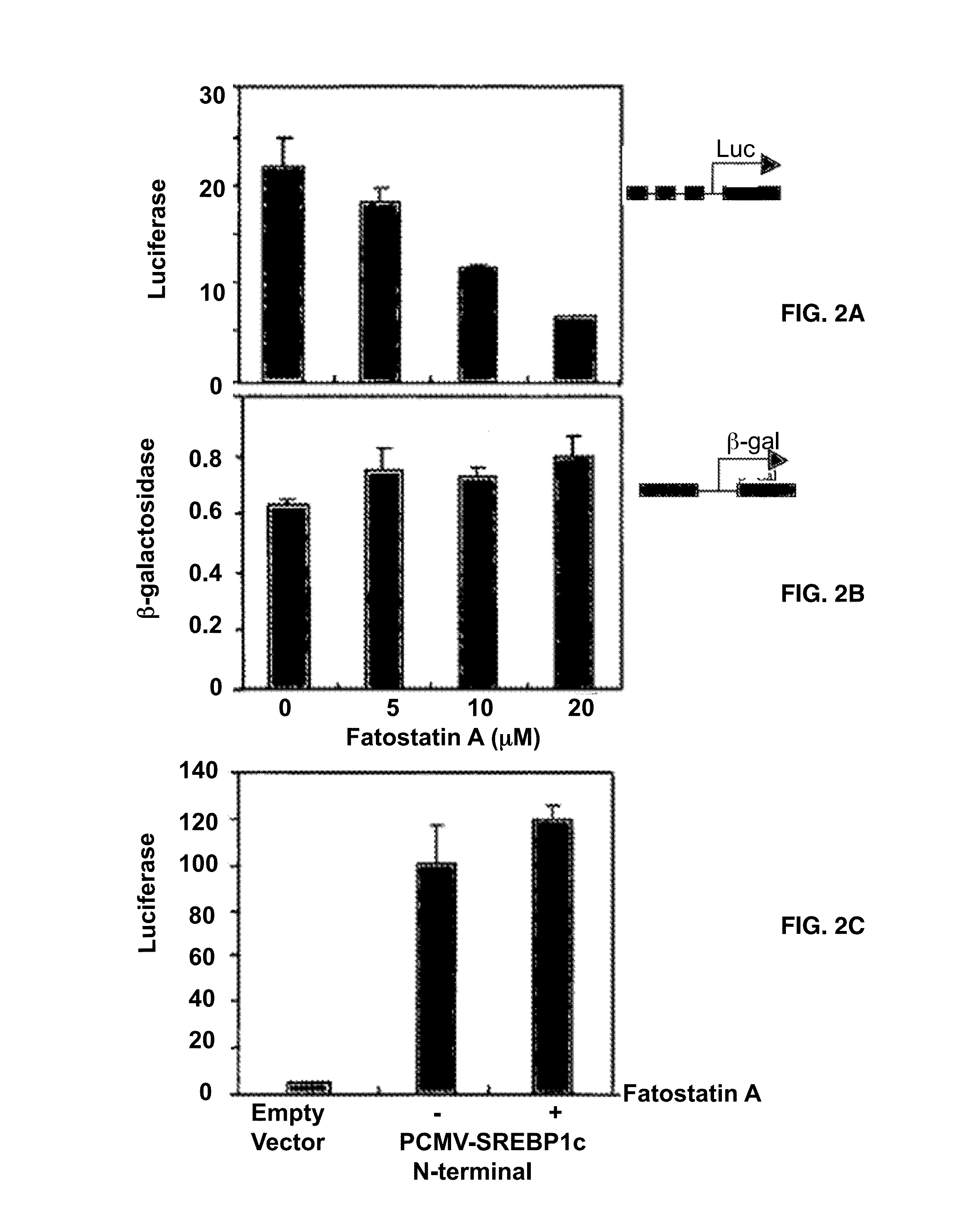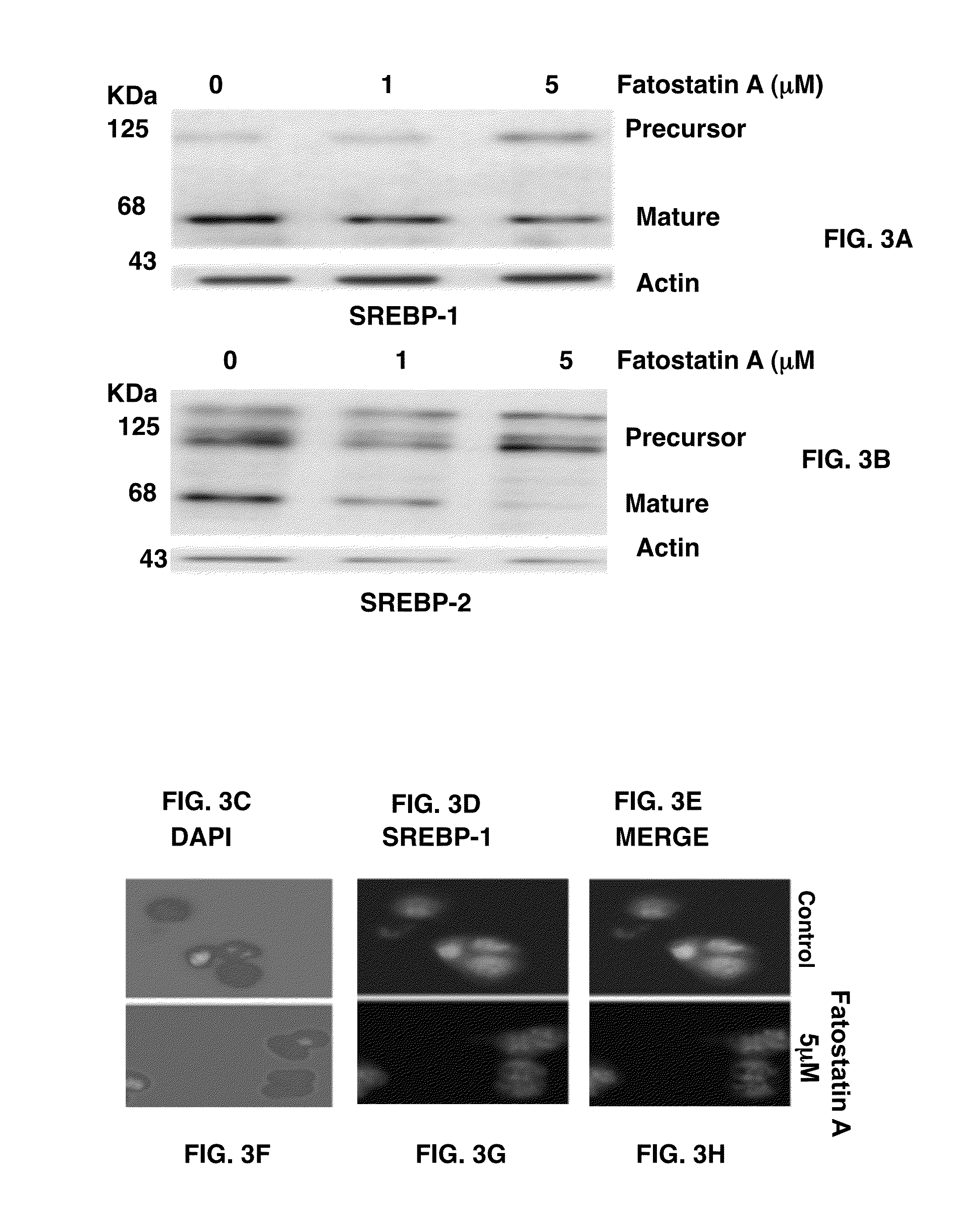Methods and compositions for the treatment of body weight related disorders
a technology for body weight and disorders, applied in the field of methods, can solve problems such as the deficiency of novel compositions and methods, and achieve the effect of improving the quality of life and reducing the risk of diseas
- Summary
- Abstract
- Description
- Claims
- Application Information
AI Technical Summary
Problems solved by technology
Method used
Image
Examples
example 1
Fatostatin A Reduces the Expression of SREBP-Responsive Genes
[0136]Gene expression profile comparison of the drug-treated and untreated cells might reveal specific molecular pathways affected by fatostatin A. DU145 cells were treated with fatostatin A or DMSO alone, and extracted mRNA samples were analyzed by Affimetrix DNA microarrays mapping 33,000 genes (Table 1).
[0137]
TABLE 1Genes known or likely to be controled by SREBPs wereregulated by Fatostatin A showed in Microarray resultGene CodeDecreased foldName of genesGenes known to be controlled by SREBPNM_000527.20.574349low density lipoprotein receptor(LDLR)NM000859.10.53-hydroxy-3-methylglutaryl-Coenzyme A reductase (HMG CoA R)NM 0002130.10.3535533-hydroxy-3-methylglutaryl-CoenzymeA synthase 1 (HMG CoA S)NM_001096.10.574349ATP citrate lyaseNM_000664.10.574349acetyl-Coenzyme A carboxylase alphaNM_005063.10.574349stearoyl-CoA desaturase (SCD)NM_002004.10.659754farnesyl pyrophosphate syntlietaseAK0001620.535887acetyl-CoA synthetaseN...
example 2
Fatostatin A Blocks the Proteolytic Activation of SREBPS
[0140]To examine whether fatostatin A affects the proteolytic activation of SREBPs, whole cell lysates of DU145 cells treated with fatostatin A were analyzed by western blots with an antibody against the NH2 terminus of SREBP-1 (FIG. 3A). The treatment of fatostatin A decreased the amounts of the 68 KDa mature form of SREBP-1 in a dose-dependent manner, while the amounts of the 125 KDa precursor form increased. Similar results were obtained for SREBP-2 with an antibody against its COOH terminus (FIG. 3B). These results indicate that fatostatin A directly or indirectly impairs the proteolytic activation of both SREBP isoforms.
[0141]The inhibition of the proteolytic activation of SREBPs would impair the nuclear translocation of SREBPs. Effects of fatostatin A on the subcellular localization of SREBP-1 were analyzed by immunofluoresence microscopy with an antibody against the NH2 terminus of SREBP-1. When cells were treated with D...
example 3
Validation of the Fatostatin Phenotypes by Knocking Down SREBP-1
[0142]Fatostatin A causes two phenotypes in cultured cells: (i) inhibition of the insulin-induced adipogenesis of 3T3-L1 cells and (ii) repression of the serum-independent growth of DU145 prostate cancer cells. The first phenotype is in complete agreement with the conclusion that fatostatin A is a blocker of SREBP-1 because of the known role of SREBP-1 in lipogenesis (Tontonoz et al., 1993). To confirm that under the cell-culture condition, the expression of SREBP-1 in 3T3-L1 cells was silenced by transfecting an expression vector of a small interfering RNA (siRNA) specific for SREBP-1 (FIG. 4G), and the effects of the silencing on the insulin-induced adipogenesis were examined. As expected, the knockdown of the SREBP-1 expression completely blocked the oil droplet formation of 3T3-L1 cells (FIGS. 4D-4F, clones 1 and 2), whereas the control cells transfected with an empty vector (neo; FIG. 4A) showed as much fat accumul...
PUM
 Login to View More
Login to View More Abstract
Description
Claims
Application Information
 Login to View More
Login to View More - R&D
- Intellectual Property
- Life Sciences
- Materials
- Tech Scout
- Unparalleled Data Quality
- Higher Quality Content
- 60% Fewer Hallucinations
Browse by: Latest US Patents, China's latest patents, Technical Efficacy Thesaurus, Application Domain, Technology Topic, Popular Technical Reports.
© 2025 PatSnap. All rights reserved.Legal|Privacy policy|Modern Slavery Act Transparency Statement|Sitemap|About US| Contact US: help@patsnap.com



